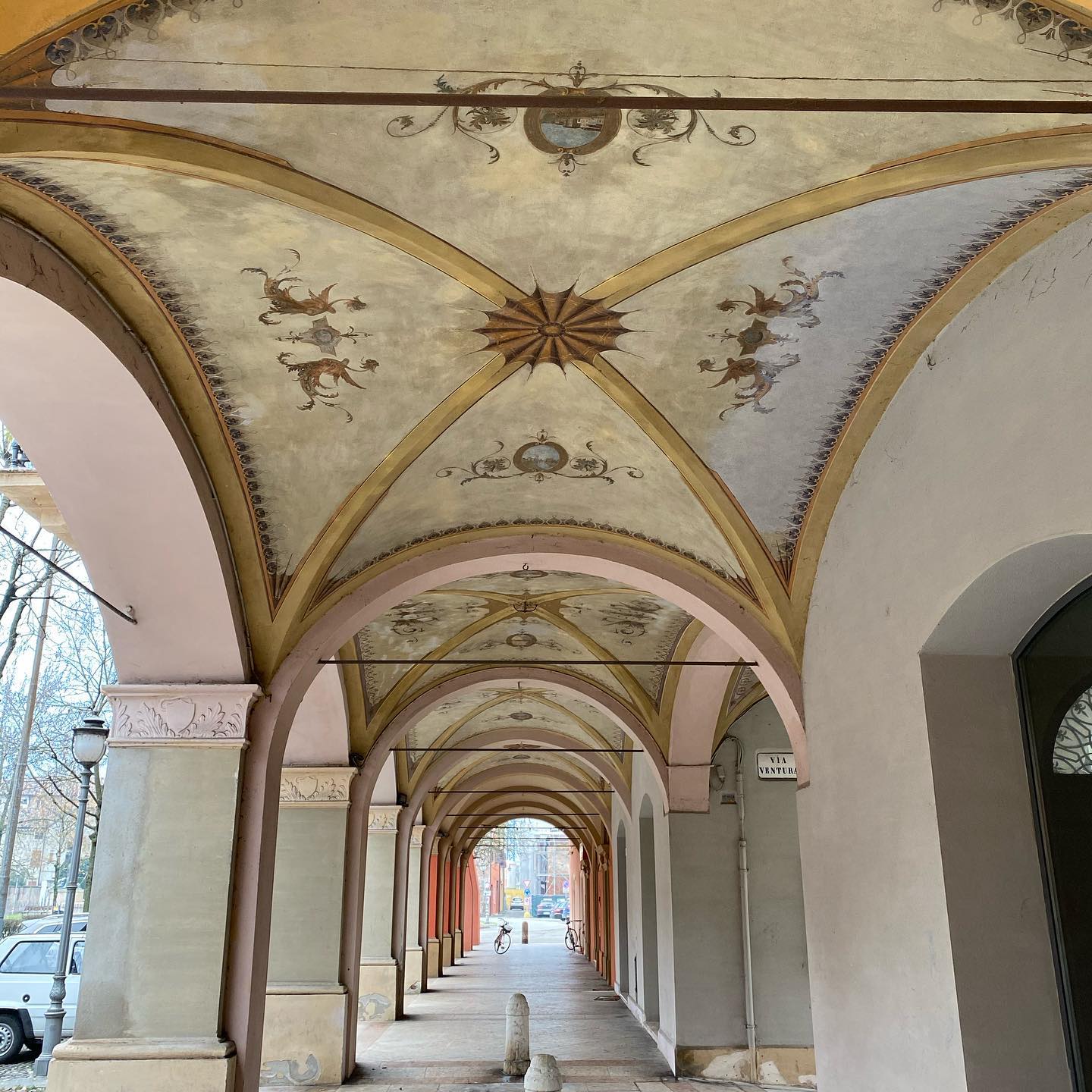Il ghetto ebraico

Nel Cinquecento Finale Emilia aveva l’aspetto di una piccola Venezia: il fiume Panaro ne solcava il centro cittadino e si ramificava in tre canali, rendendola un centro commerciale di primaria importanza per l’economia del Ducato di Ferrara. Questa conformazione richiamò una piccola compagine di ebrei che a poco a poco diedero vita a una comunità importante e numerosa; dal 1541 (data in cui il duca Ercole II d’Este concesse la prima condotta che comprendeva l’apertura di un banco feneratizio), per oltre quattrocento anni gli ebrei del Finale vissero e operarono attivamente, garantendo alla città ricchezza e benessere. Banchieri, mercanti di biade, venditori di generi di abbigliamento e strazzaroli (le occupazioni più diffuse) si susseguirono nel corso dei secoli, riuscendo – malgrado vari episodi di intolleranza e persecuzione nei loro confronti - a mantenere rapporti abbastanza pacifici con la comunità cristiana. Per questi motivi, l’istituzione di un ghetto a Finale Emilia ebbe luogo soltanto nel 1736, cioè quasi un secolo dopo quello della vicina Modena; chiuso nel 1796 dai francesi di Napoleone Bonaparte, venne ripristinato nel 1814 con la Restaurazione e smantellato definitivamente nel 1859 con la caduta dell’ultimo duca estense. I confini del ghetto sono la via Trento Trieste (dove anticamente scorreva il Panaro), la via Torre Portello e la via Ventura. La conformazione dell’area rese assai agevole la chiusura del ghetto, per la quale furono sufficienti due porticelle - una in via Torre Portello accanto alla Torre dei Modenesi e una all’inizio del Portico del Ghetto -, un portone per i carri all’incrocio di via Torre Portello con via Ventura, e quattro muri aggiuntivi. Sotto al Portico del Ghetto, il cui soffitto è in parte decorato da pregevoli tempere di fine Ottocento, si affacciavano i negozi e poche abitazioni; in capo alla via Ventura è stata collocata nel 2019 una grande scultura, realizzata in India e donata dai Sikh, che rappresenta il generale Rubino Ventura e il maharaja Ranjit Singh, al cui servizio il generale (nato nella casa di fronte al monumento) mise la propria spada. Per visite guidate al ghetto: ALMA FINALIS, tel. 353 4258898; info@almafinalis.it.
foto: I portici Bertazzoli che delimitano l'ex Ghetto ebraico di Finale Emilia

In the 16th century, Finale Emilia resembled a small Venice: the Panaro River flowed through the city center and branched into three canals, making it a commercial hub of primary importance for the economy of the Duchy of Ferrara. This layout attracted a small group of Jews who gradually established a large and important community. From 1541 (when Duke Ercole II d'Este granted the first charter, which included the opening of a moneylending bank), for over four hundred years the Jews of Finale lived and worked actively, ensuring the city's wealth and prosperity. Bankers, grain merchants, clothing sellers, and rag-and-bone men (the most common occupations) followed one another over the centuries, managing—despite various episodes of intolerance and persecution against them—to maintain fairly peaceful relations with the Christian community. For these reasons, the establishment of a ghetto in Finale Emilia took place only in 1736, almost a century after that of nearby Modena. Closed in 1796 by Napoleon Bonaparte's French forces, it was restored in 1814 with the Restoration and finally dismantled in 1859 with the fall of the last Duke of Este. The boundaries of the ghetto are Via Trento Trieste (where the Panaro river once flowed), Via Torre Portello, and Via Ventura. The layout of the area made it very easy to close off the ghetto, requiring only two small gates—one on Via Torre Portello next to the Torre dei Modenesi and one at the beginning of the Portico del Ghetto—a large gate for carts at the intersection of Via Torre Portello and Via Ventura, and four additional walls. Under the Portico del Ghetto, whose ceiling is partly decorated with fine late 19th-century tempera paintings, there were shops and a few houses. at the end of Via Ventura, a large sculpture was placed in 2019, made in India and donated by the Sikhs, representing General Rubino Ventura and Maharaja Ranjit Singh, in whose service the general (born in the house opposite the monument) placed his sword. For guided tours of the ghetto: ALMA FINALIS, tel. 353 4258898; info@almafinalis.it.
photo: The Bertazzoli arcades that border the former Jewish Ghetto of Finale Emilia
